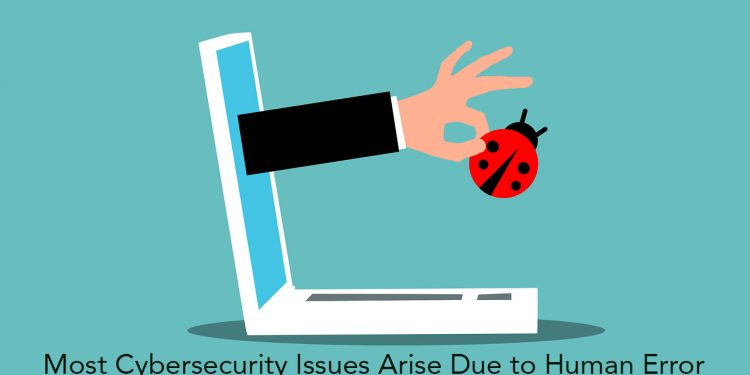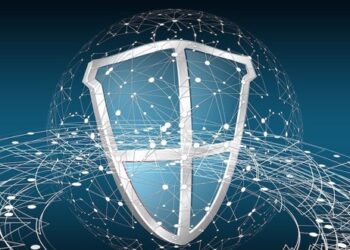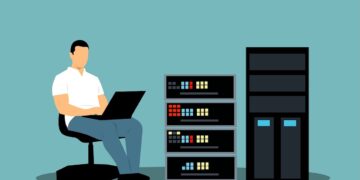Cybersecurity risks are becoming more complex and sophisticated, and attacks are increasing daily. Check Point research data shows security attacks increased by 59% compared to last year. In addition, business in India has been attacked by cyber criminals 1742 times per week over the previous six months. So the question arises, what actually are the main reasons behind rising cyber-attacks? According to the world economic forum report, 95% of cyber security issues occur due to human error. And If you count the worldwide cyber skills deficiency to the mix, you have the perfect storm for a cybercriminal. 2021 ISC 2 Cybersecurity Workforce Study indicated that we lack almost 3 million cybersecurity professionals globally.
Many businesses have already taken cyber initiatives for their employees. The vital foundation for good cybersecurity is a strategic movement to train and create cybersecurity awareness to keep employees well prepared in cyber hygiene.
Here are some important tips to prevent phishing, malware, and ransomware attacks.
Phishing
Cybercriminals use phishing attacks to trick users and make them share valuable information like identification data, companies’ official data, account numbers, passwords, OTP, etc. Cybercriminals commonly use this technique and often succeed due to a lack of awareness and training. Cybercriminals send emails to a large or target segment of employees impersonating a coworker, major financial institution, Government organizations, companies, etc., offering jobs, carrying surveys, offers, lottery, lucky draw, or a curiosity attachment. Once a user opens the email, it will ask for details; details could be anything basis on their set methods. Once they get the data, they will further follow you via email or other ways to lure you; they can sell your data, use it for identity theft, or launch further cyberattacks.
Although many email service providers already try to recognize such emails, they can still reach your inbox. It’s important to be cautious when receiving emails, especially any with an unusual request.

One should always follow to check the sender name, sender domain name, and purpose of the email. If an email contains an attachment, try looking at the attachment type and extensions without clicking it. If you see a suspicious file or extension, do not click it. It may install malicious software into your device.
Phishing attacks happen due to human negligence; Awareness and employee training would be the best way to avoid such attacks. Organizations should ensure all employees are well aware of identifying suspicious emails and websites and do not fill in any details or download files from websites they do not trust.
Malware
Malware is a type of malicious application designed to manipulate and harm device or network tasks. Some malware is created to spy on the user’s activity, while some try to obtain the user’s device data and some cause disruptions to your system processing.
If a system is affected by malware, one can not easily prevent its functioning. But how does malware get installed on your computer, maybe via email attachments or by connecting your device with external removable media or from internet downloads?

It is important to be cautious when opening emails with links or files. You can prevent it by following cybersecurity guidelines; here are a few tips to avoid becoming a victim of a malware attack.
Ensure your system have proper anti-malware software.
Again organizations should ensure employee training and awareness to avoid malware attacks.
Do not open or download anything from suspected websites
Use a strong password, and if possible, use a double-factor authentication method.
Keep software and applications up to date.
Network monitoring for malicious suspect activity
Ransomware
Ransomware is a type of malware that stops a user from accessing their device unless a ransom is paid. Cybercriminals inject malware into your system to block user access or extract data they can leverage over the victim for ransom. Mainly there are three types of malware scareware, screen lockers and encrypting ransomware. There has been double and even triple extortion ransomware that can blackmail the victim’s client too; for example, malware enters your device via a link from a trusted firm or a file downloaded. Nowadays, ransomware-as-a-Service (Raas) is being used by cybercriminals; some sell their services to others.
If you want to protect your system from ransomware malware, then prevent it from happening in the first place. Follow the company’s cybersecurity guidelines, avoid downloading anything from random untrusted websites, and do not click random unknown links in emails or open attachments. Take a backup of your important data and applications and keep your system and applications up to date. Finally, keep an eye on the latest security updates and development, and educate yourself.
Sundar Balasubramanian, MD of Check Point Software, said, “Most cyberattacks occur because of human error, so it is in their hands to improve cybersecurity, both at home and at work. This is an essential activity in which we all have a part to play, The term ‘If you are not part of the solution, you are part of the problem’ fits perfectly when it comes to cybersecurity and users.”
Also Read: Cybersecurity Incident Responders Face More Pressure To Defend the Digital Front Line























